Threestripe pencilfish - Nannostomus trifasciatus
Scientific name: Nannostomus trifasciatus
Common name: Threestripe pencilfish
Family: Lebiasinidae
Usual size in fish tanks: 4 - 5 cm (1.57 - 1.97 inch)
014
Recommended pH range: 5.9 - 7
Recommended water hardness: 0 - 7°N (0 - 125ppm)
0°C 32°F30°C 86°F
Recommended temperature range: 23 - 29 °C (73.4 - 84.2°F)
The way how these fish reproduce: Spawning
Where the species comes from: South America
Temperament to its own species: peaceful
Temperament toward other fish species: peaceful
Usual place in the tank: Middle levels
Food and Feeding
The Threestripe Pencilfish (Nannostomus trifasciatus) is a surface feeder with a small mouth, requiring appropriately sized food. A high-quality flake food, preferably crushed, serves as a staple diet. To ensure optimal health and vibrant coloration, supplement their diet with daphnia, newly hatched brine shrimp, and other fine-sized live or frozen foods.
Origin
The Threestripe Pencilfish is native to South America, specifically found in the Amazon River basin, including regions of Peru, Bolivia, Brazil, and Guyana. They inhabit slow-moving blackwater streams rich in tannins and covered by dense vegetation.
Sexing
Sexing Nannostomus trifasciatus is relatively simple. Males tend to be slimmer and exhibit brighter coloration than females, especially during breeding periods.
Breeding
Breeding Threestripe Pencilfish requires a well-prepared environment. Follow these key steps:
- Tank Setup: Use Java Moss or spawning mops to provide safe spawning sites.
- Lighting: Keep the lighting subdued to mimic their natural habitat.
- Group Spawning: Add multiple males and females to increase breeding success.
- Parent Removal: Once spawning is complete, remove the parents immediately to prevent them from consuming the eggs.
- Egg Development: Eggs typically hatch within 24–36 hours, and fry become free-swimming a few days later.
- Fry Diet: Start with infusoria, transitioning to newly hatched brine shrimp as they grow.
Lifespan
With proper care, the Threestripe Pencilfish (Nannostomus trifasciatus) has an average lifespan of 5 years.
Tank Requirements & Water Conditions
- Tank Size: A minimum of 15 gallons (57 liters) is recommended to accommodate a group.
- Temperature: Maintain between 23°C – 29°C (73.4°F – 84.2°F).
- pH Range: Prefers slightly acidic water between 5.9 – 7.0.
- Water Hardness: Soft water is ideal, with a hardness level of 0 – 7°dGH (0 – 125 ppm).
- Filtration: A gentle filter such as a sponge filter is ideal to avoid strong currents.
- Substrate & Decor: Use dark substrate, leaf litter, and driftwood to replicate their natural blackwater environment.
Tankmates & Compatibility
Threestripe Pencilfish are peaceful schooling fish that thrive in groups of at least 6 or more. They are best suited for a community tank with similarly peaceful species. Ideal tankmates include:
- Neon Tetras and other small tetra species.
- Ember Tetras.
- Honey Gouramis and other small gourami species.
- Panda Corydoras and other Corydoras catfish.
- Otocinclus Catfish, a peaceful algae eater.
Short Description
The Threestripe Pencilfish (Nannostomus trifasciatus) is a peaceful, mid-level swimmer that adds elegance to a planted aquarium. Best kept in groups of six or more, these fish are an excellent choice for a blackwater biotope or a community tank with other small, peaceful species.
Due to their small size and delicate nature, they thrive best in a well-planted tank with soft, slightly acidic water. With proper care and a suitable environment, they will exhibit their natural colors and behaviors, making them a rewarding addition to any aquarium.
Pictures
Bought by aqua-fish.net from jjphoto.dk.
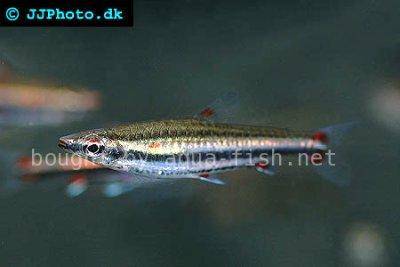



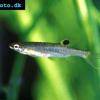 Splashing
Splashing 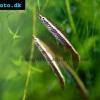 Brown
Brown 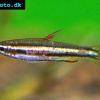 Dwarf
Dwarf 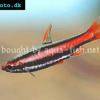 Coral-red
Coral-red